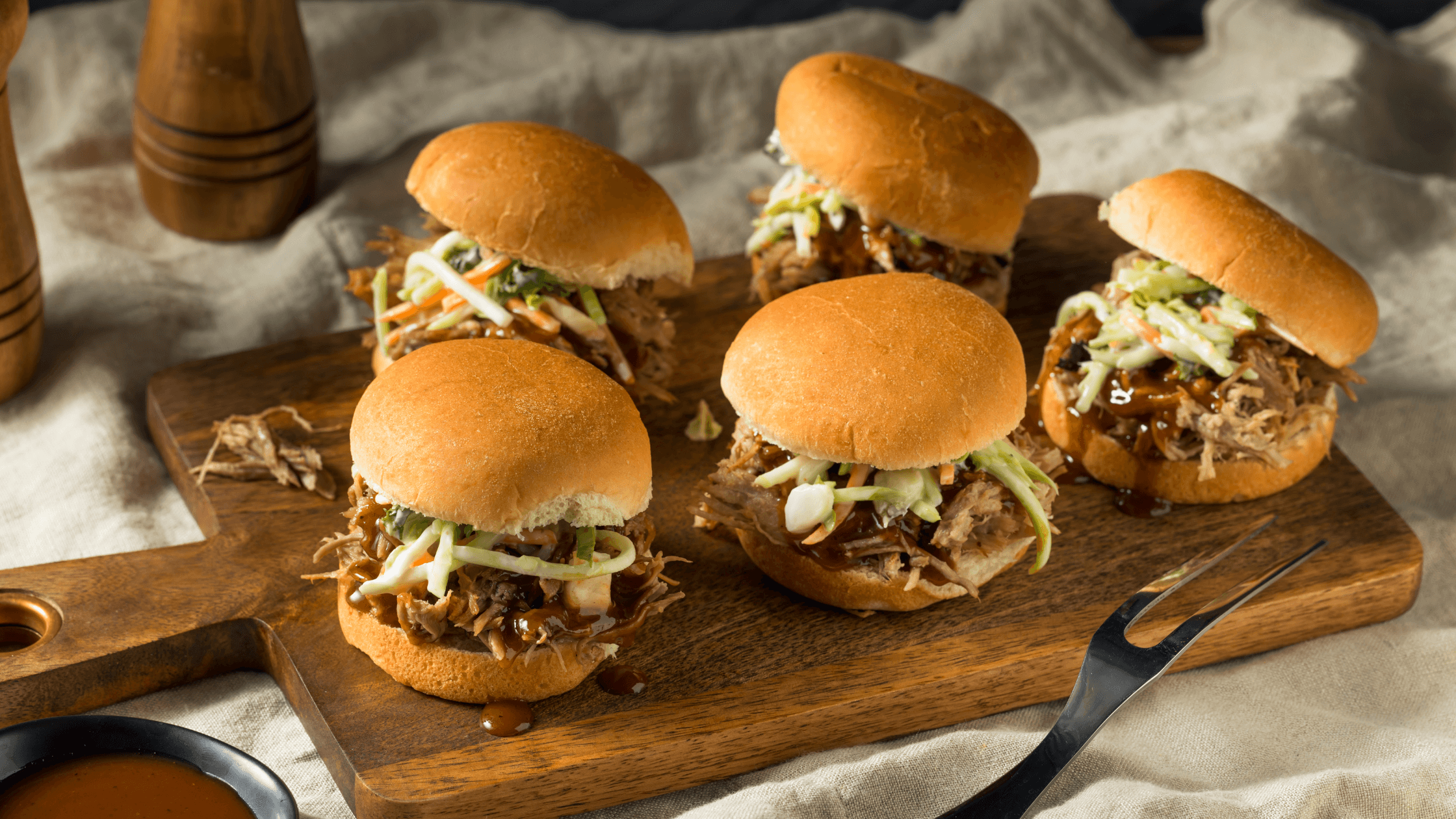Nutrition for patients with irritable bowel syndrome (IBS) is highly individualized, and if you've ever felt overwhelmed by the restrictive low FODMAP diet, we get it. Enter the Simplified Low FODMAP Diet — a more flexible, less restrictive approach to FODMAPs that supports digestive health and relieves abdominal symptoms without needing a strict elimination diet.
Designed with simplicity and sustainability in mind, the Simplified Low FODMAP Diet (also known as the FODMAP Gentle Diet) focuses on reducing only the most common high-FODMAP triggers for people with IBS rather than cutting out all foods considered high in FODMAPs.
The Simplified Low FODMAP Diet can be an excellent option for people with IBS who want to see their symptoms improve without the stress and time commitment that comes with tracking every ingredient. Think of it as a middle ground: less restrictive than the standard low FODMAP diet, but still grounded in science to help reduce symptoms like gas, bloating, and abdominal discomfort.

Who Can Benefit from a Simplified Low FODMAP Diet?
While short-term, the traditional low FODMAP diet (which was developed at Monash University in Australia) can feel restrictive for a lot of people, and not everyone needs to follow it to relieve their abdominal symptoms. The Simplified Low FODMAP Diet can be a suitable alternative for people who want symptom relief without a full elimination diet. However, it's important to note that like the traditional low FODMAP diet, the Simplified Low FODMAP Diet is only temporary and should be followed by reintroduction of the foods you were limiting.
Here are some groups of people who may benefit most from a simplified low FODMAP approach:
- People with milder IBS symptoms: If your symptoms are relatively mild or occasional, a full low FODMAP elimination may be more effort than necessary to manage your FODMAP intolerance. A FODMAP gentle or simplified approach allows you to reduce your overall FODMAP load without feeling like you’re cutting out a long list of foods. For example, if you know you have a fructan intolerance or raffinose intolerance, you may want to focus on just reducing those groups of FODMAPs rather than all high FODMAP foods.
- People who currently eat larger amounts of high FODMAP foods: If your FODMAP intake is currently very high, you may benefit from reducing it rather than completely eliminating all FODMAPs. For example, maybe your typical cooking routine involves multiple garlic cloves or you're a huge fan of high-fiber protein bars, which are packed with inulin and chicory root. In these cases, you may find that simply reducing your intake of these very high FODMAP foods is enough to improve your symptoms.
- People with a history of or current disordered eating: A highly restrictive diet can trigger maladaptive eating behaviors or thought patterns. The simplified low FODMAP approach focuses on flexibility and food freedom, which may be a better fit for people who want to support digestive health without fueling food anxiety. However, it does still involve some amount of restriction, so it's best to work with a healthcare provider like a registered dietitian.
- People who are underweight or struggling to maintain weight: Restrictive eating can make it even harder to meet energy and nutrient needs. The Simplified Low FODMAP Diet encourages more food variety and calories while still managing symptoms.
- Those with multiple dietary restrictions: If you're already following a gluten-free, dairy-free, vegan, allergy-conscious, other therapeutic diet, or dietary restrictions due to religious or cultural practices, layering the full low FODMAP diet on top can be overwhelming. A simplified low FODMAP approach allows for symptom relief without further limiting what you can eat.
- Children or older adults: Strict diets can be especially tricky for kids and older adults, who often have unique nutritional or social eating needs and who are often not in control over their choices at meals. The simplified low FODMAP method supports symptom relief while keeping meals simple and nourishing.
- People who are burnt out on elimination diets: If you've tried several restrictive diets, the Simplified Low FODMAP Diet may feel more approachable and sustainable, helping you focus on long-term gut health without perfectionism.
- Anyone looking to ease digestive discomfort without a complete overhaul: You don't have to follow a strict plan to experience relief. The simplified low FODMAP approach supports people who want to improve their gut health while maintaining a balanced, enjoyable way of eating.

How Does a Simplified Low FODMAP Diet Differ from a Strict Low-FODMAP Diet?
While the strict low FODMAP diet involves cutting out all high FODMAP foods for several weeks before reintroducing them by FODMAP category, the simplified low FODMAP approach is more flexible. Rather than eliminating all high FODMAP foods, it focuses on eliminating key foods that are high in FODMAPs and making adjustments based on personal tolerance and known dietary triggers. This method can feel less overwhelming and more realistic for long-term symptom management.
Here's a breakdown of the main differences between the strict low FODMAP diet and the Simplified Low FODMAP Diet.
The Simplified Low FODMAP Diet contains similar principles to the modified NICE guidelines. The modified NICE guidelines recommend avoiding gas-producing foods like legumes and foods with sugar alcohols (like stone fruits). People with diarrhea-predominant IBS (IBS-D) may find avoiding foods with sugar alcohols particularly beneficial, as sugar alcohols can have a laxative effect.
A 2025 study published in the Clinical Journal of Gastroenterology and Hepatology found that people with IBS-D following the Simplified Low FODMAP Diet (where only fructans and GOS were restricted) had similar improvements in their symptoms as people following the traditional low FODMAP diet. While there's not a lot of other research comparing the two diets, this recent study indicates that the Simplified Low FODMAP Diet could be a suitable alternative to the traditional low FODMAP diet.

Foods to Limit on a Simplified Low FODMAP Diet
There are five different FODMAP categories, including:
- Fructans
- Galacto-oligosaccharides (GOS)
- Lactose
- Polyols (especially sorbitol and mannitol)
- Excess fructose
Here's a breakdown of foods high in each type of FODMAP to limit or avoid on the Simplified Low FODMAP Diet:
Foods with fructans:
- Wheat products (bread, pasta, breakfast cereals, etc.)
- Rye-based products
- Onions
- Garlic
- Leeks (the white part)
Foods with GOS:
- Black beans
- Kidney beans
- Navy beans
- Pinto beans
Foods with lactose:
- Milk
- Yogurt
Foods with mannitol:
- Cauliflower
- Mushrooms
Foods with sorbitol:
- Apples
- Pears
- Cherries
- Peaches
- Nectarines
- Plums
- Apricots
- Prunes
- Watermelon
Foods with excess fructose:
- Apples
- Pears
- Dried fruit
- Watermelon
You don't have to completely eliminate all high FODMAP foods to feel better. The simplified low FODMAP approach is all about moderation — focusing on the most common symptom triggers and reducing portion sizes or how often you eat them.

High-FODMAP Foods to Approach with Caution
You may have noticed that some high FODMAP foods, like inulin and chicory root (which are added to boost the fiber content in protein and granola bars) are not included in the list of foods to avoid on the Simplified Low FODMAP Diet. However, if you know you're sensitive to these ingredients, you may wish to eliminate them for a while. It's important to listen to your body and adjust your diet based on what triggers your individual symptoms.
Steps for Transitioning to a Simplified Low FODMAP Diet
So, you've decided that a strict low FODMAP diet isn't for you, and have decided to try the Simplified Low FODMAP Diet instead. Here are some tips for getting started with the Simplified Low FODMAP Diet.
Identify your key trigger categories
If you've already done the elimination and reintroduction phases of the low FODMAP diet, you probably have a good idea of which FODMAP groups affect you the most. If you haven't completed those steps yet, consider keeping a food and symptom journal for a few days to see if you can see any links between foods you've eaten and symptoms you've experienced.
Remember, you don't need to eliminate every FODMAP group—just the highest FODMAP foods from the groups you've determined cause symptoms. If you need help identifying the highest FODMAP foods, consider using the Monash FODMAP App. The very high FODMAP foods will be rated as "red" in the app.
Choose alternatives from the same food group
The Simplified Low FODMAP Diet allows small portions of higher-FODMAP foods, especially if your tolerance is good. The goal is to strike a balance between symptom relief and dietary variety.
When you're finding alternatives for the highest FODMAP foods you've identified, try to choose alternatives that are from the same food group to ensure your diet remains nutritionally balanced. For example, swap the peach (high FODMAP) you eat as an afternoon snack for an orange (low FODMAP).

Reintroduce high FODMAP foods after 2 to 6 weeks
Once you've eliminated the highest FODMAP foods for 2 to 6 weeks, it's time to reintroduce the high FODMAP foods you've been avoiding. Try reintroducing the foods one at a time over a three-day period to assess your tolerance.
When reintroducing foods, it's important to start with a small amount. For example, if you're reintroducing milk, start with a small serving (for example, ¼ of a cup), then increase slowly (for example, to ½ of a cup, then a full cup) as tolerated.
Many people find it helpful to keep a food and symptom journal during the reintroduction phase to track their reactions to different foods and different portion sizes and identify dietary triggers. You can keep a simple pen and paper journal, or you can use the "Diary" feature in the Monash FODMAP app. It can also be helpful to work with a dietitian during this phase, as they can guide you through the reintroduction process.
Move onto the personalization phase
Once you've completed the food challenges, you can add back the high FODMAP foods that you tolerated well. For example, if you tolerated milk during the reintroduction phase, you no longer need to avoid it.
Make low FODMAP swaps for any foods you didn't tolerate during the reintroduction phase. For example, if garlic triggered your symptoms, consider using garlic-infused olive oil (which doesn't contain FODMAPs).
If certain foods caused symptoms for you, it's important to re-challenge those foods every 3 to 6 months to check if your tolerance to them has changed. Remember, the goal is to have as varied a diet as possible while relieving symptoms!

How Digestive Enzymes Can Support a Simplified Low FODMAP Diet
Transitioning to a Simplified Low FODMAP Diet often means reintroducing small amounts of higher-FODMAP foods that you may tolerate in moderation—like a ripe banana or a sprinkle of pistachios on your salad. But even small amounts of fermentable carbohydrates like fructans and galacto-oligosaccharides (GOS) can be enough to trigger gastrointestinal symptoms like bloating, gas, and abdominal pain in sensitive individuals. That's where digestive enzymes, particularly targeted enzyme supplements like FODZYME, can offer support.
Why FODMAPS like fructans and GOS are hard to digest
FODMAPs are types of short-chain carbohydrates that are found naturally but are poorly absorbed in the small intestine. Two common FODMAP groups—fructans (found in garlic, onions, and wheat) and GOS (found in legumes, nuts, and some vegetables) — are particularly difficult to digest because the human body lacks the enzymes needed to break them down.
As a result, these undigested carbs travel intact to the large intestine, where they're rapidly fermented by your gut bacteria. This fermentation process produces gas and draws water into the colon, which can produce uncomfortable symptoms like:
- Gas
- Bloating
- Abdominal pain
- Diarrhea
For people following a Simplified Low FODMAP Diet who want to enjoy small portions of foods containing fructans or GOS, this incomplete digestion can pose an issue, even in moderation.

How digestive enzymes can help break down FODMAPs
Digestive enzyme supplements provide the specific enzymes your body lacks to break down complex carbohydrates (which can be divided into oligosaccharides, which are FODMAPs, and polysaccharides, which are not FODMAPs) into simpler forms that can be absorbed before they reach the colon.
Fructan hydrolase can break down fructans into individual fructose molecules, while alpha-galactosidase breaks down GOS and lactase breaks down lactose (the natural sugar found in milk and milk products), making them easier to digest.
When taken with food, these enzymes can pre-digest FODMAPs, reducing the amount that reaches your colon undigested and reducing the chance that you'll experience gas and bloating.
One of the most well-known digestive enzyme products developed specifically for people with a FODMAP intolerance is FODZYME. It contains a proprietary blend of enzymes, including fructan hydrolase, alpha-galactosidase, and lactase, that's designed to break down fermentable carbs in real time.
A 2022 in-vitro (test tube) study found that FODZYME successfully broke down 90% of the fructans in a simulated gastrointestinal environment within 30 minutes, even in the presence of stomach acid. This significantly reduced the amount of fermentable carbohydrates reaching the colon. The same study found reduced gas production, lower microbial fermentation, and a minimal impact on beneficial short-chain fatty acid (SCFA) production. This suggests that FODZYME can help manage digestive symptoms without disrupting beneficial functions in the gut.

How to use digestive enzymes on a Simplified Low FODMAP Diet
Trying a Simplified Low FODMAP Diet? FODZYME can help you enjoy more foods with confidence.
Here are some ways to use FODZYME strategically:
- Sprinkle it on foods high in fructans, like pasta, pizza with garlic or sauteed onions.
- Pair it with GOS-containing foods like legumes.
- Mix it into yogurt to break down lactose.
Sample Meal Plan for a Simplified Low FODMAP Diet
If you're ready to embark on the Simplified Low FODMAP Diet, here's a seven-day sample meal plan to get you started:
Interested in creating your own Simplified Low FODMAP meal plan? Here are some practical meal planning tips to get you started:
- Focus on portion sizes: Unlike the strict elimination phase of the low FODMAP diet, the simplified low FODMAP approach encourages moderation. You can enjoy smaller portions of high-FODMAP foods — like red and yellow bell peppers — without triggering symptoms. Plan meals with moderate portions of potential triggers and monitor your body's response.
- Incorporate one moderate-FODMAP food at a time: When building meals, include only one moderate- or high-FODMAP food per plate to minimize FODMAP stacking and reduce its effect on your digestion.
- Use naturally low FODMAP staples: Base your meals around well-tolerated, low FODMAP ingredients like rice, oats, quinoa, potatoes, eggs, firm tofu, poultry, fish, zucchini, carrots, tomatoes, spinach, and green beans. These help create satisfying meals while keeping FODMAP load low.
- Use FODMAP-friendly flavor boosters: Instead of onions and garlic, use garlic-infused olive oil, fresh herbs, lemon juice, vinegar, mustard, and miso paste (in small amounts). These flavor boosters can increase the enjoyment of your meals without triggering symptoms.
- Choose low-lactose dairy products: Many people with lactose intolerance can still tolerate low-lactose dairy, such as aged hard cheeses (cheddar, Swiss, Parmesan) and lactose-free yogurt and milk. These foods are great sources of calcium and protein without causing digestive problems.
- Cook once, eat twice: Prepare batch-friendly meals like soups, grain bowls, and stir-fries that you can repurpose during the week. For example, roast a tray of veggies and use them in wraps, bowls, or alongside proteins.
- Use digestive supports if needed: If you know you'll be eating a moderate-FODMAP meal, consider using a digestive enzyme supplement like FODZYME (which contains enzymes to break down fructans, GOS, and lactose) to limit digestive symptoms and expand the variety of food you're able to eat.

Empowering Digestive Health with the Simplified Low FODMAP Diet
The Simplified Low FODMAP Diet offers a sustainable, less restrictive way to manage digestive symptoms while maintaining a varied diet and nutritional balance. By focusing on moderation instead of strict elimination, this flexible approach to the low FODMAP diet can help reduce food fear, improve long-term gut health, and empower people to tune into their individual tolerance levels.
If you're looking for added digestive support, especially when eating high-FODMAP foods like garlic, onion, milk, yogurt, or legumes, digestive enzymes can help. Try FODZYME today and take control of your digestion.
